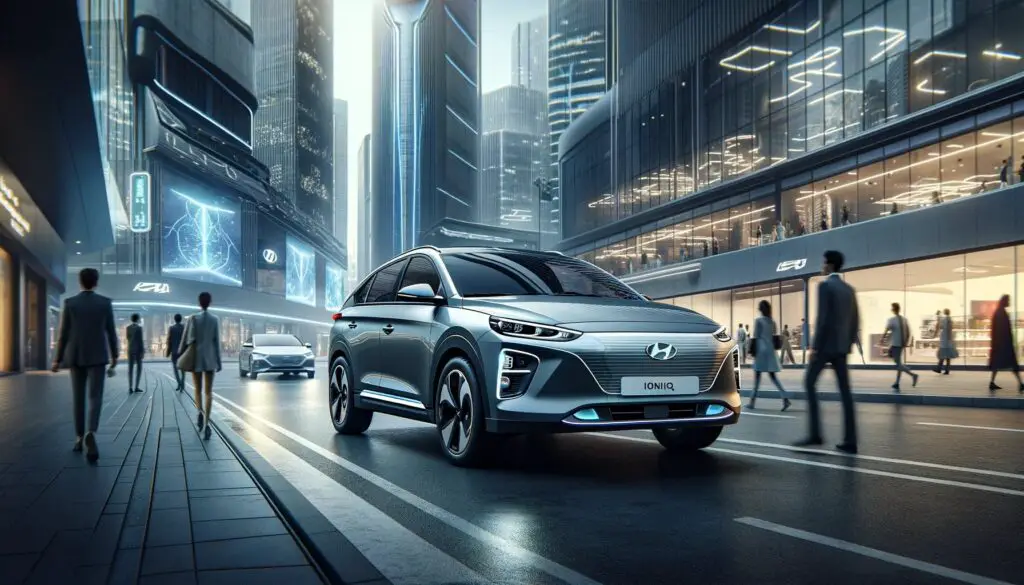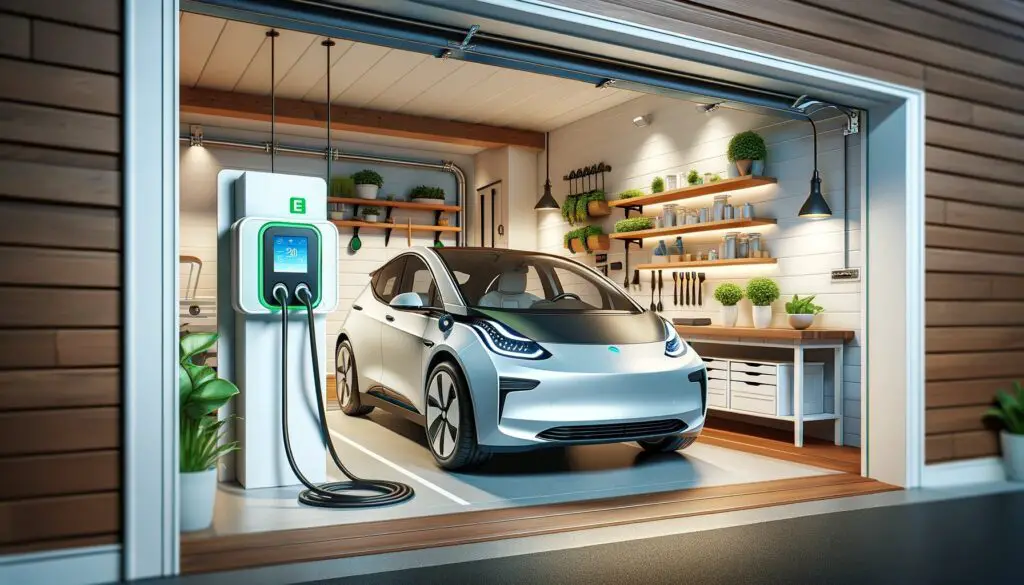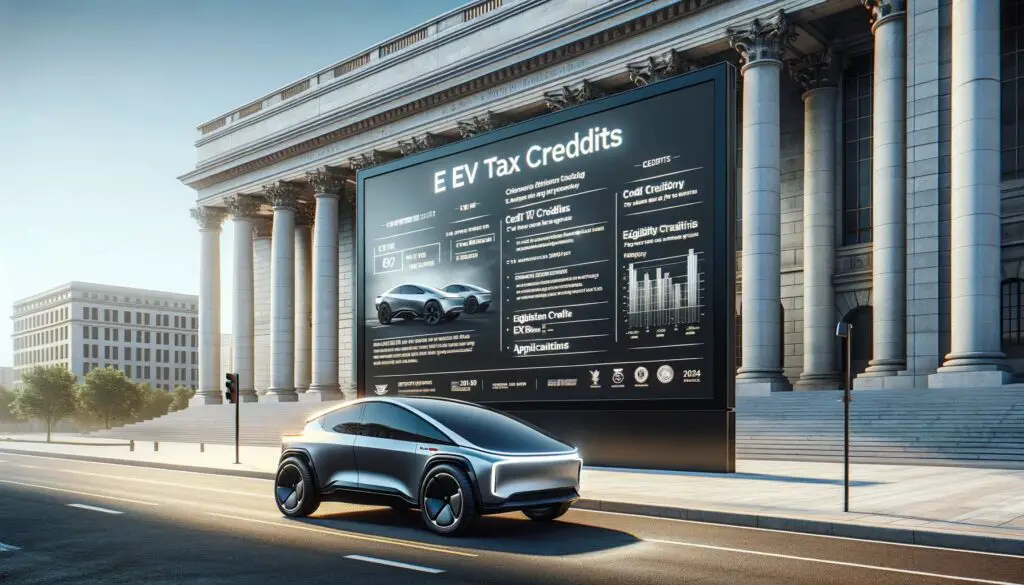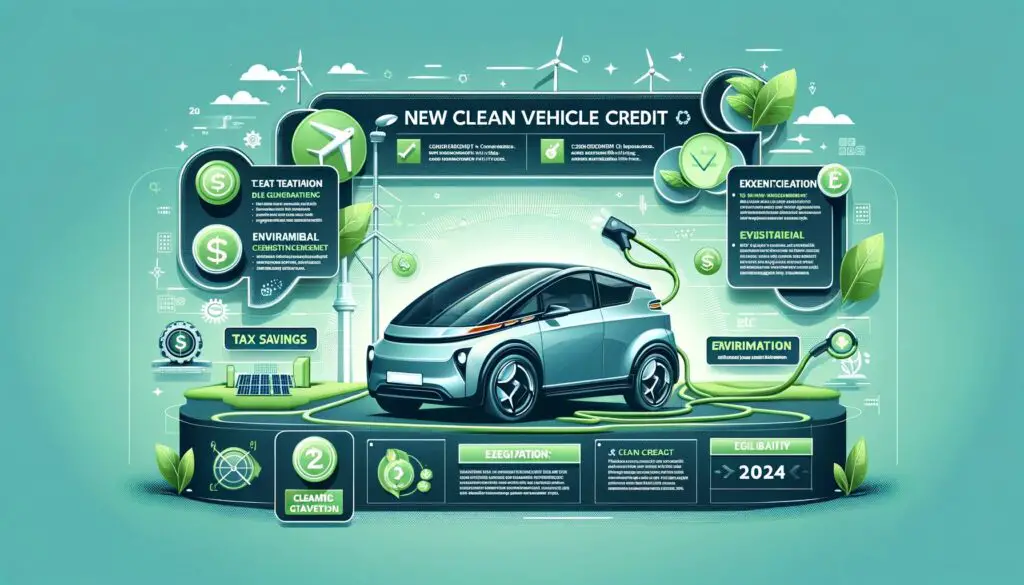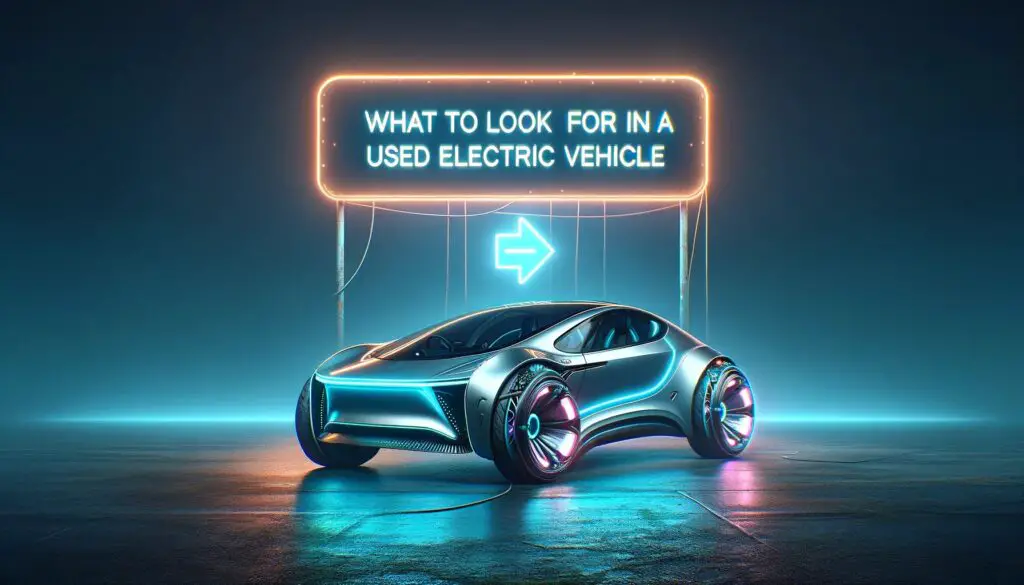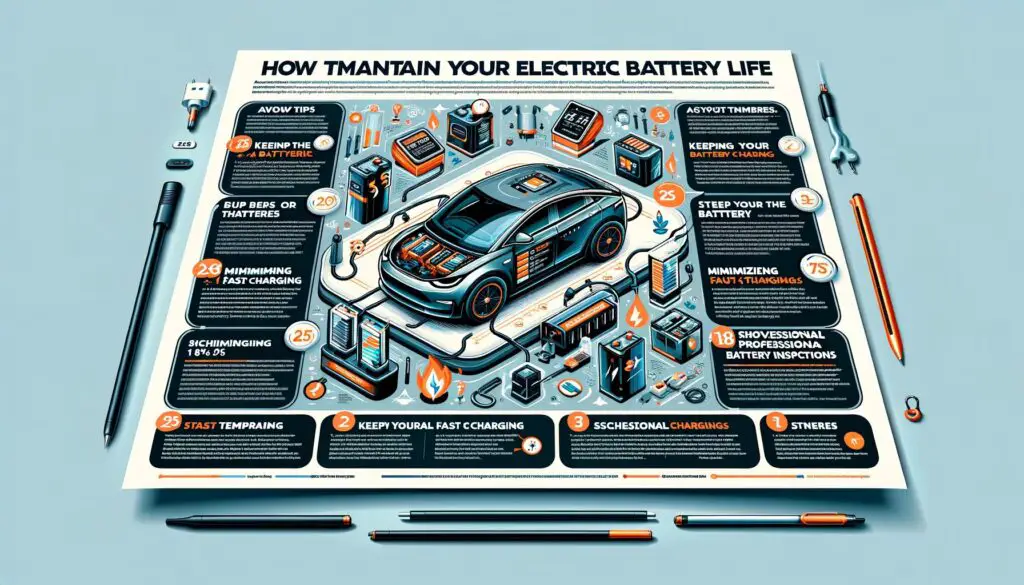In the ever-evolving landscape of automotive technology, the rise of electric vehicles (EVs) has been nothing short of revolutionary. With a focus on sustainability and efficiency, EVs have become increasingly popular among consumers. Among the various types of EVs available, All-Wheel Drive (AWD) electric vehicles stand out as versatile options that provide excellent performance and traction in a variety of conditions. In this comprehensive guide, we will explore the top AWD EVs under $40,000, shedding light on their features, benefits, and why they are a compelling choice in the market.
Overview of the AWD Electric Vehicle (EV) Market
Before delving into specific models, it’s essential to grasp the overall landscape of the AWD electric vehicle market. AWD, or All-Wheel Drive, is a drivetrain configuration that provides power to all four wheels simultaneously, enhancing traction and stability. AWD EVs have gained popularity due to their ability to deliver power to each wheel independently, making them suitable for various driving conditions.
Benefits of Choosing an AWD EV
Understanding AWD in Electric Vehicles
What is All-Wheel Drive (AWD)?
All-Wheel Drive (AWD) is a drivetrain system designed to provide power to all four wheels of a vehicle, ensuring optimal traction and control in various road conditions. Unlike traditional front-wheel or rear-wheel drive systems, AWD offers improved stability and control by distributing torque to both the front and rear axles. This enhanced power distribution is particularly beneficial in challenging environments, such as slippery or uneven terrain, where maintaining traction is crucial.
AWD systems come in different variations, but the core principle remains the same: they engage all four wheels to work together, mitigating the limitations of two-wheel drive systems. AWD technology has evolved over the years, and in modern electric vehicles, it has become even more sophisticated, offering precise control and adaptability.
How AWD Works in EVs
In AWD electric vehicles, the application of AWD technology takes on a unique and advanced form. Unlike traditional internal combustion engine (ICE) vehicles, where power is delivered through a mechanical drivetrain, EVs rely on electric motors for propulsion. Here’s how AWD works in EVs:
Multiple Electric Motors: AWD EVs are equipped with multiple electric motors, typically one for each wheel or axle. These motors are responsible for driving their respective wheels independently.
Precise Power Distribution: The key innovation in AWD EVs lies in the precise control of power distribution. Each electric motor can adjust the amount of power it sends to its wheel based on real-time data and driving conditions. This adaptability ensures that the right amount of torque is delivered to each wheel for optimal traction and stability.
Intelligent Control: AWD EVs employ intelligent control systems that constantly monitor factors such as wheel slip, road surface conditions, and driver inputs. This data is used to adjust the power distribution to each wheel on the fly. For example, if one wheel starts to lose traction, more power can be sent to the other wheels to compensate, preventing slippage and maintaining control.
Enhanced Efficiency: A key advantage of AWD in EVs is its contribution to efficiency. By precisely controlling the power sent to each wheel, AWD EVs can optimize energy usage. When driving conditions permit, power can be shifted to specific wheels or axles to reduce energy consumption, extending the vehicle’s range on a single charge.
Safety Benefits: AWD EVs also offer safety benefits. In slippery conditions, the system can proactively distribute power to the wheels with the most grip, helping the vehicle maintain stability and avoid accidents.
#Chevrolet Bolt EUV
Overview and Pricing
The Chevrolet Bolt EUV emerges as a compelling option in the AWD EV market, offering a blend of affordability and performance that appeals to a wide range of buyers. Its starting price, comfortably under $40,000, positions it as an attractive choice for budget-conscious individuals and families seeking an electric vehicle without breaking the bank.
Key Features and Range
Spacious Interior:
One of the standout features of the Bolt EUV is its spacious interior. Designed with passenger comfort in mind, it provides ample legroom and headroom, making it a practical choice for both daily commuting and road trips. The well-thought-out cabin layout ensures that occupants have a comfortable and enjoyable ride.
Advanced Infotainment System:
The Bolt EUV comes equipped with an advanced infotainment system that offers a seamless and connected driving experience. Features such as smartphone integration, intuitive touchscreen controls, and voice commands make it easy to stay connected, entertained, and informed while on the road. The user-friendly interface enhances overall convenience and driving pleasure.
Impressive Range:
One of the standout features of the Bolt EUV is its impressive range. With a single charge, this electric vehicle can cover approximately 250 miles, making it well-suited for long journeys without the need for frequent charging stops. This range comfortably meets the needs of most daily commutes and offers peace of mind for extended trips, reducing range anxiety for owners.
Pros:
Affordable Price Point:
The Bolt EUV’s competitive starting price under $40,000 positions it as an affordable entry into the world of electric vehicles. This affordability makes it accessible to a broader range of consumers who may be considering the switch to electric mobility.
Impressive Range for Its Class:
With a range of around 250 miles, the Bolt EUV stands out in its class. It offers a longer driving range than many of its competitors, making it a practical choice for those who want to maximize their driving without frequent charging stops.
Spacious Cabin:
The spacious interior of the Bolt EUV is a significant advantage. It provides ample room for passengers and cargo, making it a practical choice for families or those who value interior space and comfort.
Cons:
Interior Materials Could Be More Premium:
While the Bolt EUV excels in terms of space and functionality, some critics have noted that the interior materials could be more premium. Although the cabin is comfortable and spacious, the use of higher-quality materials could elevate the overall interior feel.
Charging Infrastructure Availability May Vary by Region:
One potential drawback is the availability of charging infrastructure, which may vary by region. While urban areas tend to have a more extensive network of charging stations, rural or less densely populated areas may have fewer options. Buyers should consider the availability of charging infrastructure in their specific location when choosing the Bolt EUV.
In conclusion, the Chevrolet Bolt EUV offers a compelling package for budget-conscious buyers in the AWD EV market. With an affordable starting price, impressive range, spacious interior, and advanced infotainment system, it caters to a wide range of needs and preferences. However, potential buyers should keep in mind the availability of charging infrastructure in their area and the desire for premium interior materials when evaluating this vehicle.
#Nissan Leaf Plus
Overview and Pricing
The Nissan Leaf Plus emerges as a compelling AWD EV option priced under $40,000, offering an attractive combination of features and affordability. Nissan’s reputation for reliability adds to its appeal, making it a solid choice for buyers seeking a well-rounded electric vehicle.
Key Features and Range
Comfortable Interior:
One of the key highlights of the Leaf Plus is its comfortable interior. Nissan has designed the cabin with passenger comfort in mind, providing ample space for both front and rear occupants. The well-cushioned seats and thoughtful layout contribute to a pleasant driving experience.
User-Friendly Technology:
The Leaf Plus comes equipped with a user-friendly technology package that enhances convenience and connectivity. The infotainment system is intuitive and responsive, offering features such as smartphone integration, touchscreen controls, and voice commands. Staying connected and entertained while on the road is made easy, providing an enjoyable driving experience.
Range Adequate for Most Commutes:
While the range of the Leaf Plus is slightly shorter than some of its competitors at approximately 226 miles on a single charge, it still offers ample coverage for the majority of daily commutes. This makes it a practical choice for urban and suburban driving, where frequent long journeys may not be the norm.
Pros:
Proven Reliability:
Nissan’s reputation for reliability is a significant advantage of the Leaf Plus. Buyers can trust that this electric vehicle is built to last and is backed by a manufacturer known for producing durable and dependable vehicles.
Comfortable and Spacious Interior:
The Leaf Plus excels in providing a comfortable and spacious interior. Whether you’re driving solo or with passengers, the cabin offers ample room and supportive seating, ensuring a pleasant and enjoyable ride.
Well-Integrated Technology:
The user-friendly technology integrated into the Leaf Plus enhances the overall driving experience. Features like smartphone connectivity and an intuitive infotainment system make it easy to stay connected and entertained while on the road.
Cons:
Slightly Lower Range Compared to Some Rivals:
While the Leaf Plus offers a reasonable range of approximately 226 miles, it falls slightly short when compared to some of its competitors in the AWD EV market. Buyers who prioritize longer range capabilities may want to explore other options.
Limited Availability of AWD Variant:
One potential limitation of the Leaf Plus is the limited availability of the AWD variant. Depending on your region and dealership, the AWD version may not be as readily accessible as the front-wheel-drive version. Buyers interested in AWD should check for availability in their area.
In conclusion, the Nissan Leaf Plus is a compelling AWD EV option that combines affordability, reliability, and user-friendly features. With a comfortable interior and well-integrated technology, it caters to buyers seeking a practical and enjoyable electric vehicle experience. While its range may not be the longest in its class and the availability of the AWD variant can vary, the Leaf Plus remains a solid choice for those looking for a dependable and well-rounded electric vehicle.
#Hyundai Kona Electric
#Mazda MX-30
Overview and Pricing
The Mazda MX-30 stands out as a unique and stylish AWD electric vehicle that brings a touch of individuality to the market. While its pricing remains competitive, it is the MX-30’s design and features that truly set it apart from the crowd.
Key Features and Range
Distinctive Cabin Design:
One of the defining characteristics of the MX-30 is its distinctive cabin design. Mazda has opted for a blend of elegance and innovation, creating an interior that feels modern and upscale. From its sustainable materials to its user-centric layout, the cabin reflects Mazda’s commitment to providing a distinctive driving experience.
User-Friendly Infotainment:
The MX-30 is equipped with a user-friendly infotainment system that aligns with Mazda’s philosophy of putting the driver first. Intuitive controls, a responsive touchscreen, and seamless smartphone integration ensure that drivers can stay connected and entertained without unnecessary distractions.
Agile Handling:
Mazda has a reputation for producing vehicles with agile and responsive handling, and the MX-30 is no exception. Whether navigating city streets or winding country roads, this electric vehicle offers a dynamic and engaging driving experience that enthusiasts will appreciate.
Pros:
Unique and Stylish Design:
The MX-30’s unique and stylish design sets it apart in a market filled with conventional electric vehicles. Its innovative approach to both exterior and interior aesthetics appeals to those looking for a vehicle that stands out from the ordinary.
Well-Crafted Interior:
The interior of the MX-30 showcases Mazda’s commitment to craftsmanship. High-quality materials, attention to detail, and a driver-centric design create an inviting and comfortable space for occupants.
Agile Handling:
Mazda’s reputation for producing vehicles with exceptional handling is evident in the MX-30. Its responsive and agile nature ensures that driving enthusiasts can enjoy the thrill of the road while still benefiting from electric propulsion.
Cons:
Limited Range Compared to Rivals:
One of the potential drawbacks of the MX-30 is its range, which is approximately 124 miles on a single charge. While this range may be sufficient for daily commuting and city driving, it falls short of the longer ranges offered by some competitors.
Smaller Rear Seat Space:
The MX-30’s unique cabin design may lead to slightly less rear seat space compared to some rivals. Buyers with a focus on rear passenger comfort and space may want to consider this factor.
In conclusion, the Mazda MX-30 distinguishes itself in the AWD electric vehicle market through its unique and stylish design, well-crafted interior, and agile handling. While its range may not be as extensive as some competitors, its design and driving dynamics compensate for it, making it an attractive choice for those seeking a distinctive electric vehicle experience. Mazda’s commitment to craftsmanship and innovation is evident in the MX-30, offering a refreshing alternative in the world of electric mobility.
#Kia Niro EV
Overview and Pricing
The Kia Niro EV presents itself as a practical and efficient AWD electric vehicle designed to meet the needs of families and eco-conscious buyers. With competitive pricing, it further solidifies its position as an attractive choice in the market.
Key Features and Range
Spacious and Practical Design:
The Niro EV embraces a spacious and practical design that caters to families and individuals alike. With ample interior space, comfortable seating, and a thoughtfully designed cabin layout, it prioritizes practicality and comfort. The versatility of the interior makes it suitable for a wide range of everyday activities.
User-Friendly Tech:
Kia has equipped the Niro EV with user-friendly technology that enhances convenience and connectivity. The infotainment system is intuitive and responsive, providing features such as smartphone integration and touchscreen controls. Staying connected and entertained while on the road is made simple and enjoyable.
Efficient and Eco-Friendly:
Efficiency and eco-friendliness are core attributes of the Niro EV. With its electric powertrain, it produces zero tailpipe emissions, making it an environmentally responsible choice. Its efficient use of energy and regenerative braking system contribute to eco-conscious driving.
Pros:
Spacious and Practical Design:
The Niro EV’s spacious and practical design is a significant advantage for families and individuals seeking versatility in their electric vehicle. The well-designed interior offers ample room for passengers and cargo, making it suitable for various lifestyles.
Efficient and Eco-Friendly:
For eco-conscious buyers, the Niro EV aligns with their values by offering an environmentally responsible transportation option. Its electric powertrain and efficient use of energy contribute to reduced carbon emissions and a greener footprint.
Competitive Pricing:
Kia’s competitive pricing strategy makes the Niro EV an accessible choice for a wide range of buyers. It offers affordability without compromising on essential features and capabilities, making it an excellent value proposition.
Cons:
Not as Sporty as Some Competitors:
While the Niro EV excels in practicality and efficiency, it may not offer the same sporty driving experience as some of its competitors. Buyers looking for a more spirited or performance-oriented ride may want to explore other options.
Limited Availability of AWD Variant:
Similar to some other models, the availability of the AWD variant of the Niro EV may vary by region and dealership. Prospective buyers interested in the AWD version should verify its availability in their area.
In conclusion, the Kia Niro EV distinguishes itself as a practical and eco-conscious AWD electric vehicle that caters to families and individuals seeking versatility and efficiency. With its spacious interior, user-friendly tech, and competitive pricing, it offers a compelling package that addresses a wide range of needs. While it may not provide a sporty driving experience, its emphasis on practicality and eco-friendliness makes it an appealing choice for those prioritizing these qualities in their electric
Comparative Analysis
Performance and Safety
AWD Performance in Different Conditions
All of the AWD EVs discussed in this article showcase commendable performance across various driving conditions, thanks to their intelligent AWD (All-Wheel Drive) systems. Whether you’re facing challenging weather, uneven terrain, or off-road adventures, these vehicles have been designed to excel in maintaining control and stability. Here’s why they stand out:
- Optimal Power Distribution: AWD technology in these EVs ensures that power is distributed effectively to all four wheels, allowing each wheel to receive an appropriate amount of torque. This distribution of power results in improved traction and stability, which is particularly advantageous in challenging road conditions.
- Versatility in Varied Terrains: AWD EVs are exceptionally versatile when it comes to handling different terrains. Whether you’re navigating through snowy roads, muddy paths, or steep hills, these vehicles can confidently tackle diverse conditions. This adaptability is crucial for individuals residing in regions with unpredictable or harsh weather patterns.
- Safety Benefits: Enhanced traction and stability directly translate into increased safety. When driving an AWD EV, you’re less likely to experience a loss of control or skidding, which plays a critical role in accident prevention. This improved safety is especially essential for families and daily commuters who rely on their vehicles in all weather conditions.
Safety Features in AWD EVs
Safety remains a paramount concern for both manufacturers and buyers, and these AWD EVs come equipped with advanced safety features to provide peace of mind. These features include:
- Adaptive Cruise Control: Adaptive cruise control is a safety feature that automatically adjusts your vehicle’s speed to maintain a safe following distance from the vehicle ahead. It’s particularly useful in heavy traffic and on highways, as it reduces the need for constant manual speed adjustments.
- Lane-Keeping Assist: Lane-keeping assist is designed to help you stay within your lane by providing steering inputs or gentle nudges to keep you centered. If your vehicle begins to drift out of its lane without the use of a turn signal, this feature can intervene and guide you back into your lane.
- Automatic Emergency Braking: Automatic emergency braking is a critical safety feature that monitors the road ahead and can apply the brakes if it detects an impending collision. It’s designed to mitigate the severity of collisions or, ideally, prevent them altogether by stopping the vehicle in time to avoid impact.
These advanced safety features not only enhance the safety of the occupants but also contribute to reducing the overall risk of accidents on the road. They represent a significant step forward in making AWD EVs not only efficient and enjoyable but also exceptionally safe to drive.
In summary, AWD EVs excel in maintaining control and stability in various driving conditions, making them versatile and reliable choices. Additionally, the inclusion of advanced safety features such as adaptive cruise control, lane-keeping assist, and automatic emergency braking enhances the overall safety of these vehicles, ensuring a secure and confident driving experience for their owners.
Battery Life and Charging
Interior and Comfort
Cabin Features Comparison
Each of the AWD EV models discussed offers a distinctive set of cabin features, catering to various preferences and needs. When making a decision, buyers should carefully consider factors such as cabin space, materials, and seating comfort. Here’s a comparative analysis:
- Chevrolet Bolt EUV: The Chevrolet Bolt EUV presents a spacious and functional interior. The cabin is designed with practicality in mind, featuring comfortable seats and a well-thought-out layout. Materials, while not luxurious, are durable and suitable for everyday use.
- Nissan Leaf Plus: The Nissan Leaf Plus offers a comfortable and spacious interior, making it an excellent choice for families and commuters. The cabin features user-friendly technology and quality materials that contribute to an enjoyable driving experience.
- Hyundai Kona Electric: The Hyundai Kona Electric impresses with a well-designed cabin that combines form and function. Quality materials and a user-friendly infotainment system enhance the interior. The spacious seating and cargo area add to its appeal.
- Mazda MX-30: The Mazda MX-30 stands out with a unique and stylish cabin design. It prioritizes both aesthetics and innovation, using sustainable materials to create a modern and upscale interior. While it may have a shorter range, its design and handling compensate for it.
- Kia Niro EV: The Kia Niro EV offers a spacious and practical cabin design, catering to families and individuals. Its interior is designed for versatility, with ample room for passengers and cargo. The user-friendly tech adds to the overall appeal.
Comfort and Space Analysis
Comfort and space are essential considerations for buyers, particularly for those planning long drives or carrying passengers frequently. These AWD EVs excel in providing both comfort and spaciousness:
- Spacious Cabins: All the AWD EVs discussed here prioritize spacious interiors. Whether you’re driving alone or with passengers, the cabins offer ample room for everyone to enjoy the ride. The emphasis on spaciousness ensures that occupants can travel comfortably without feeling cramped.
- Comfortable Seats: Comfortable seating is a hallmark of these AWD EVs. Whether you’re in the driver’s seat or a passenger, the well-cushioned seats provide excellent support and comfort, even during extended journeys.
- Quality Materials: The use of quality materials adds to the overall comfort and aesthetics of the interiors. While the specific materials may vary from model to model, manufacturers have paid attention to using durable and visually appealing materials that enhance the driving experience.
- Ergonomic Design: Ergonomics play a vital role in ensuring a comfortable driving experience. These AWD EVs feature ergonomic designs that prioritize driver and passenger comfort. Controls are well-placed and intuitive, reducing fatigue during long drives.
In conclusion, these AWD EVs offer spacious cabins, comfortable seating, quality materials, and ergonomic designs, collectively ensuring a comfortable and enjoyable driving experience for both the driver and passengers. Buyers can choose the model that best aligns with their preferences for cabin features, whether it’s a practical and functional interior or a unique and stylish design, without compromising on comfort and space.
Technology and Infotainment
Maintenance and Warranty
Environmental Impact
Eco-Friendliness of Each Model
The environmental impact of AWD EVs is notably lower than that of traditional gasoline vehicles, making them a sustainable choice for eco-conscious consumers. Here’s how each model contributes to a greener future:
- Chevrolet Bolt EUV: The Chevrolet Bolt EUV is a prime example of eco-friendliness in the AWD EV market. With its all-electric powertrain, it produces zero tailpipe emissions, significantly reducing its environmental footprint. This means cleaner air and a reduced contribution to air pollution, particularly in urban areas.
- Nissan Leaf Plus: The Nissan Leaf Plus shares the eco-friendly characteristics of all AWD EVs. Its electric propulsion system produces no direct emissions, contributing to cleaner air and a reduction in greenhouse gas emissions. By driving a Leaf Plus, owners play their part in reducing the carbon footprint associated with transportation.
- Hyundai Kona Electric: The Hyundai Kona Electric aligns with the goal of reducing environmental impact. Its all-electric operation not only reduces emissions but also minimizes noise pollution, contributing to a quieter and more sustainable urban environment. It offers a sustainable mode of transportation without compromising on performance.
- Mazda MX-30: The Mazda MX-30 is another AWD EV that prioritizes eco-friendliness. While it may have a shorter range compared to some competitors, its electric powertrain significantly reduces emissions and reliance on fossil fuels. Owners of the MX-30 can enjoy an environmentally responsible driving experience.
- Kia Niro EV: The Kia Niro EV caters to eco-conscious buyers by providing a practical and efficient AWD electric vehicle. Its electric propulsion system minimizes air pollution, and its competitive pricing makes it accessible to a wide range of buyers seeking a greener alternative.
Electric vs. Gasoline Vehicles
Comparing AWD EVs to traditional gasoline vehicles highlights the substantial environmental benefits of electric propulsion:
- Lower Emissions: AWD EVs produce zero tailpipe emissions, while gasoline vehicles emit harmful pollutants such as carbon monoxide, nitrogen oxides, and particulate matter. This reduction in emissions significantly contributes to cleaner air and a reduction in the overall environmental impact.
- Reduced Reliance on Fossil Fuels: AWD EVs rely on electricity for power, reducing the dependence on fossil fuels like gasoline. This shift towards electricity as a primary energy source aligns with efforts to transition to renewable and cleaner energy generation, ultimately contributing to a more sustainable energy ecosystem.
- Energy Efficiency: AWD EVs are inherently more energy-efficient than gasoline vehicles. Electric motors convert a higher percentage of energy from their source to kinetic energy, reducing waste and improving overall efficiency. This translates to fewer resources consumed for the same amount of travel.
In conclusion, AWD EVs represent a significant step towards a greener and more sustainable future. Their lower emissions, reduced reliance on fossil fuels, and superior energy efficiency make them an environmentally responsible choice for transportation. By opting for AWD EVs, consumers contribute to cleaner air, reduced pollution, and a more sustainable energy landscape, ultimately helping to address pressing environmental challenges.
Resale Value and Depreciation
Projected Resale Values
Resale value is an important consideration for many buyers, and AWD EVs tend to fare well in this regard due to their growing popularity and demand. Here’s why they often retain their value:
- Increasing Popularity: AWD EVs have been gaining popularity in recent years, driven by advancements in technology, greater environmental awareness, and incentives for electric vehicle adoption. As more consumers recognize the benefits of AWD EVs, demand for these vehicles has risen.
- Limited Supply: While the popularity of AWD EVs is increasing, the supply remains somewhat limited, especially for specific models. Limited availability, combined with growing demand, can contribute to higher resale values.
- Longevity: AWD EVs are known for their durability and longevity. Electric drivetrains have fewer moving parts and less wear and tear compared to internal combustion engines. This means that AWD EVs often maintain their performance and condition over a more extended period, making them attractive in the used car market.
Depreciation Rates of EVs
Compared to traditional gasoline vehicles, electric vehicles, including AWD EVs, tend to experience slower depreciation. Several factors contribute to their strong resale value:
- Lower Operating Costs: AWD EVs benefit from lower operating costs compared to gasoline vehicles. Electricity is generally more cost-effective than gasoline, resulting in significant savings over time. This cost advantage adds to the overall value proposition of AWD EVs.
- Reduced Maintenance Costs: AWD EVs have fewer moving parts and require less maintenance than internal combustion engine vehicles. This reduction in maintenance costs is appealing to buyers and contributes to their lower cost of ownership.
- Environmental Benefits: The environmental benefits of AWD EVs, including reduced emissions and decreased reliance on fossil fuels, enhance their appeal in the used car market. Buyers often prioritize vehicles that align with sustainability goals.
- Government Incentives: Government incentives and rebates for electric vehicles can further reduce the initial purchase price, making AWD EVs more attractive to buyers. These incentives may also extend to the used car market, benefiting both sellers and buyers.
In summary, AWD EVs tend to retain their value well in the resale market due to their increasing popularity, limited supply, longevity, and several other factors. Additionally, the slow depreciation rates of AWD EVs, driven by lower operating and maintenance costs, environmental benefits, and government incentives, make them an appealing choice for buyers looking for a vehicle with strong resale value and a lower total cost of ownership.
Insurance and Running Costs
Consumer Reviews and Testimonials
Gathering Consumer Insights
Consumer reviews and testimonials provide real-world experiences from AWD EV owners, offering valuable insights into these vehicles’ performance, reliability, and overall satisfaction levels. Here’s a look at the insights these reviews can offer:
- Performance: AWD EV owners often share their experiences regarding the vehicles’ performance in various conditions. This includes feedback on acceleration, handling, and traction, particularly in inclement weather or challenging terrain. Positive reviews highlight the effectiveness of AWD systems in enhancing overall performance.
- Reliability: Reliability is a key factor for any vehicle purchase. Consumer reviews can shed light on the long-term reliability of AWD EVs, including feedback on the durability of components like the battery, electric motors, and overall drivetrain. Positive experiences from owners reinforce the trustworthiness of these vehicles.
- Satisfaction Levels: Consumer satisfaction is a crucial aspect of AWD EV ownership. Reviews and testimonials often express overall satisfaction levels, including how well the vehicles meet owners’ expectations and needs. Positive feedback indicates that AWD EVs are delivering on their promises.
Real-Life Experiences
Real-life experiences shared by AWD EV owners help prospective buyers make informed decisions. These experiences offer a glimpse into the daily lives of AWD EV drivers and highlight both the benefits and areas for improvement:
- Benefits: Positive reviews highlight the advantages of owning an AWD EV. These benefits may include lower operating costs, environmental benefits, advanced technology features, and overall driving enjoyment. Hearing about these benefits can be particularly persuasive for potential buyers.
- Constructive Feedback: Not all reviews are entirely positive, and that’s where constructive feedback comes in. Some owners may share areas where they believe improvements could be made. This feedback can be valuable for manufacturers, as it can drive future enhancements and updates to AWD EV models.
- Ownership Stories: Personal ownership stories provide a unique perspective on AWD EVs. These stories can include anecdotes about road trips, daily commutes, and how AWD EVs fit into owners’ lifestyles. Reading about real-life experiences can help potential buyers envision how an AWD EV might integrate into their lives.
In conclusion, consumer reviews and testimonials offer a wealth of insights into AWD EVs’ performance, reliability, and overall satisfaction levels. Positive experiences highlight the advantages of owning these vehicles, while constructive feedback provides manufacturers with valuable input for continuous improvement. Reading about real-life experiences helps prospective buyers make informed decisions and gain a deeper understanding of what it’s like to own an AWD EV.
Expert Opinions
What Industry Experts Say
Industry experts, including automotive journalists and industry professionals, provide valuable insights and opinions about AWD EVs. Their evaluations offer an additional perspective for buyers to consider when making well-informed choices:
- Performance Assessment: Expert opinions often include detailed assessments of AWD EVs’ performance characteristics, such as acceleration, handling, and traction. They may comment on how well these vehicles perform in different driving conditions, providing valuable insights for potential buyers.
- Reliability and Durability: Industry experts frequently evaluate the reliability and durability of AWD EVs. Their assessments can shed light on the vehicles’ long-term performance and the quality of components like the battery, electric motors, and drivetrain.
- Technology and Features: Experts explore the technology and features offered by AWD EVs, assessing their user-friendliness, innovation, and overall value. Their insights help buyers understand the advanced capabilities and convenience these vehicles provide.
Comparative Rankings
Industry experts often rank AWD EVs based on various criteria, allowing buyers to compare these models and make informed decisions. Comparative rankings consider factors such as:
- Range: Experts evaluate the range of AWD EVs, which is a crucial consideration for many buyers. Longer ranges can provide more flexibility and convenience for daily commuting and longer trips.
- Price: Comparative rankings take into account the affordability of AWD EVs, helping buyers identify models that offer the best value for their budget. Pricing considerations often include any available incentives or rebates.
- Interior Quality: The quality of the cabin materials, comfort, and space are assessed in rankings. This information helps buyers choose AWD EVs that match their preferences for interior design and comfort.
- Technology and Infotainment: Comparative rankings consider the technology and infotainment features offered by AWD EVs. Buyers can identify models that align with their desires for connectivity and convenience.
- Safety Features: Safety is a paramount concern for buyers. Experts evaluate the safety features and capabilities of AWD EVs, helping buyers select vehicles that prioritize safety.
- Environmental Impact: Rankings may also factor in the environmental impact of AWD EVs, highlighting models that excel in reducing emissions and promoting sustainability.
In summary, expert opinions and comparative rankings from industry professionals provide valuable guidance for buyers considering AWD EVs. These assessments cover performance, reliability, technology, and various other aspects, enabling buyers to make well-informed choices based on their priorities and preferences.
Buying Guide
Frequently Asked Questions
What is the average range of AWD EVs under $40K?
The average range of AWD EVs priced under $40,000 is approximately 240 miles on a single charge. However, it’s important to note that specific models may offer more or less range depending on their features, battery capacity, and efficiency.
Are there any upcoming AWD EVs in this price range?
Automakers are continually expanding their electric vehicle offerings, including AWD models. To stay updated on upcoming AWD EVs in the under $40,000 price range, it’s advisable to follow automotive news, visit manufacturer websites, and consult with local dealerships for information on upcoming releases.
How do AWD EVs perform in snow and off-road conditions?
AWD EVs are well-suited for snow and off-road conditions due to their intelligent AWD systems. These systems distribute power to all wheels, enhancing traction and control in challenging terrain. AWD EVs can perform admirably in snowy or off-road environments, providing confidence and stability to drivers.
What are the long-term benefits of owning an AWD EV?
Owning an AWD EV offers several long-term benefits:
- Reduced Operating Costs: AWD EVs typically have lower operating costs compared to traditional gasoline vehicles due to lower fuel expenses and reduced maintenance needs.
- Lower Environmental Impact: AWD EVs produce zero tailpipe emissions, reducing their environmental impact. They contribute to cleaner air and a greener future by reducing reliance on fossil fuels.
- Potential Tax Incentives: Many regions offer tax incentives and rebates for electric vehicle ownership. These incentives can provide long-term financial benefits to AWD EV owners.
- Strong Resale Value: AWD EVs tend to retain their value well in the resale market, offering long-term value for owners. This strong resale value can translate into lower total ownership costs.
Conclusion
In summary, the market for AWD electric vehicles under $40,000 offers a range of compelling options, each with its own set of features and benefits. From the affordable Chevrolet Bolt EUV to the stylish Mazda MX-30, buyers have a diverse array of choices to suit their preferences and needs. With advancing technology and growing environmental awareness, AWD EVs are poised to play a significant role in the future of the automotive industry. As you embark on your journey to find the perfect AWD EV, consider your priorities, consult expert opinions, and weigh the factors that matter most to you. With careful research and consideration, you can make an informed decision and enjoy the many advantages of owning an AWD electric vehicle.


